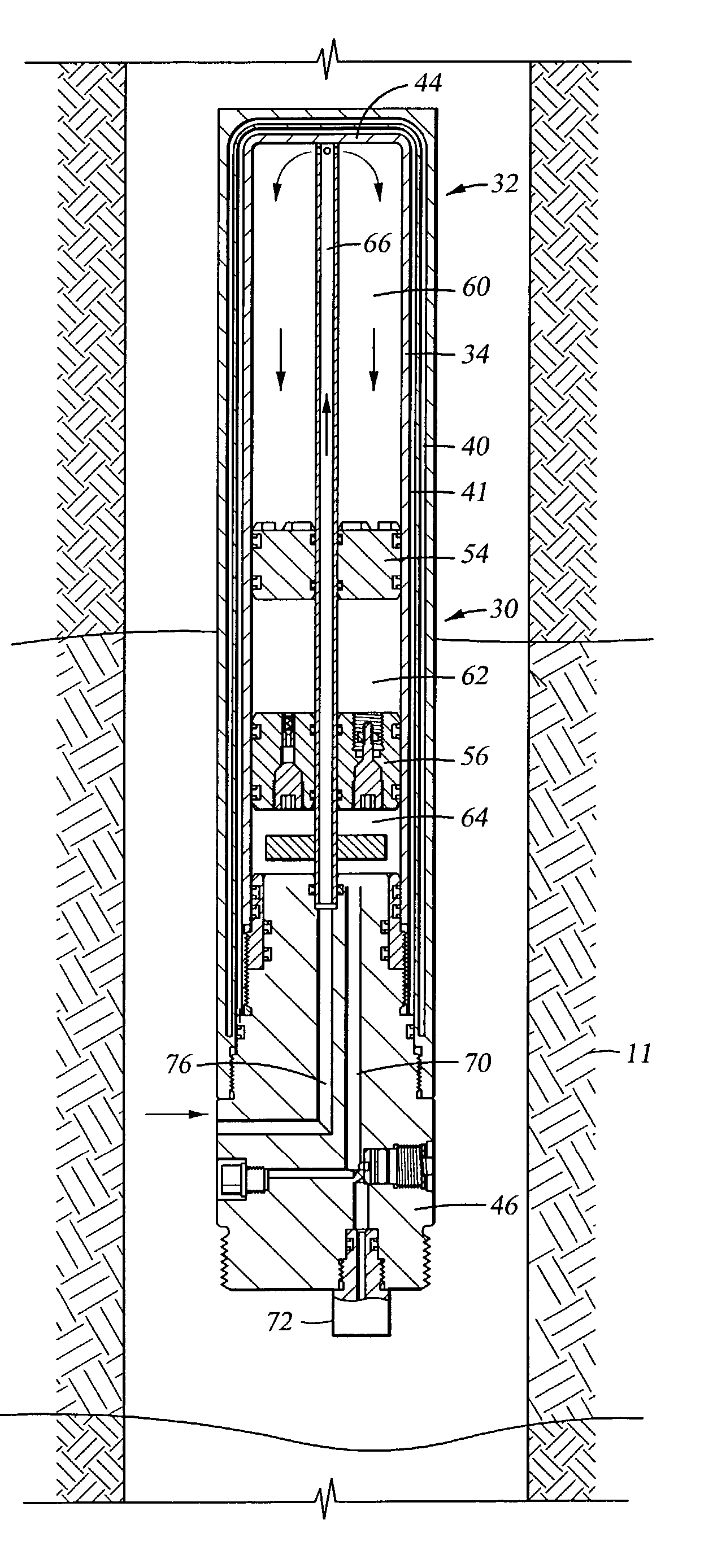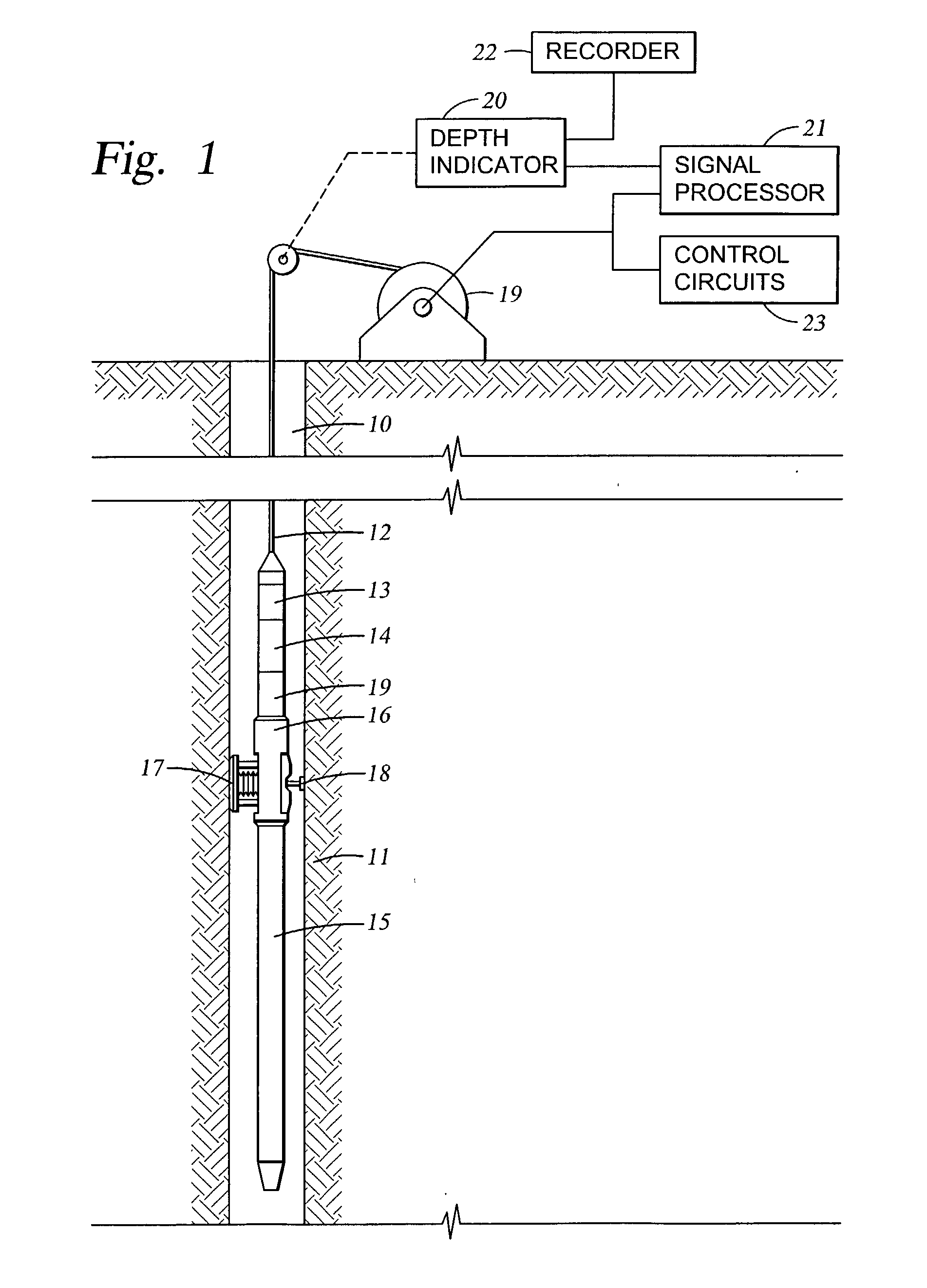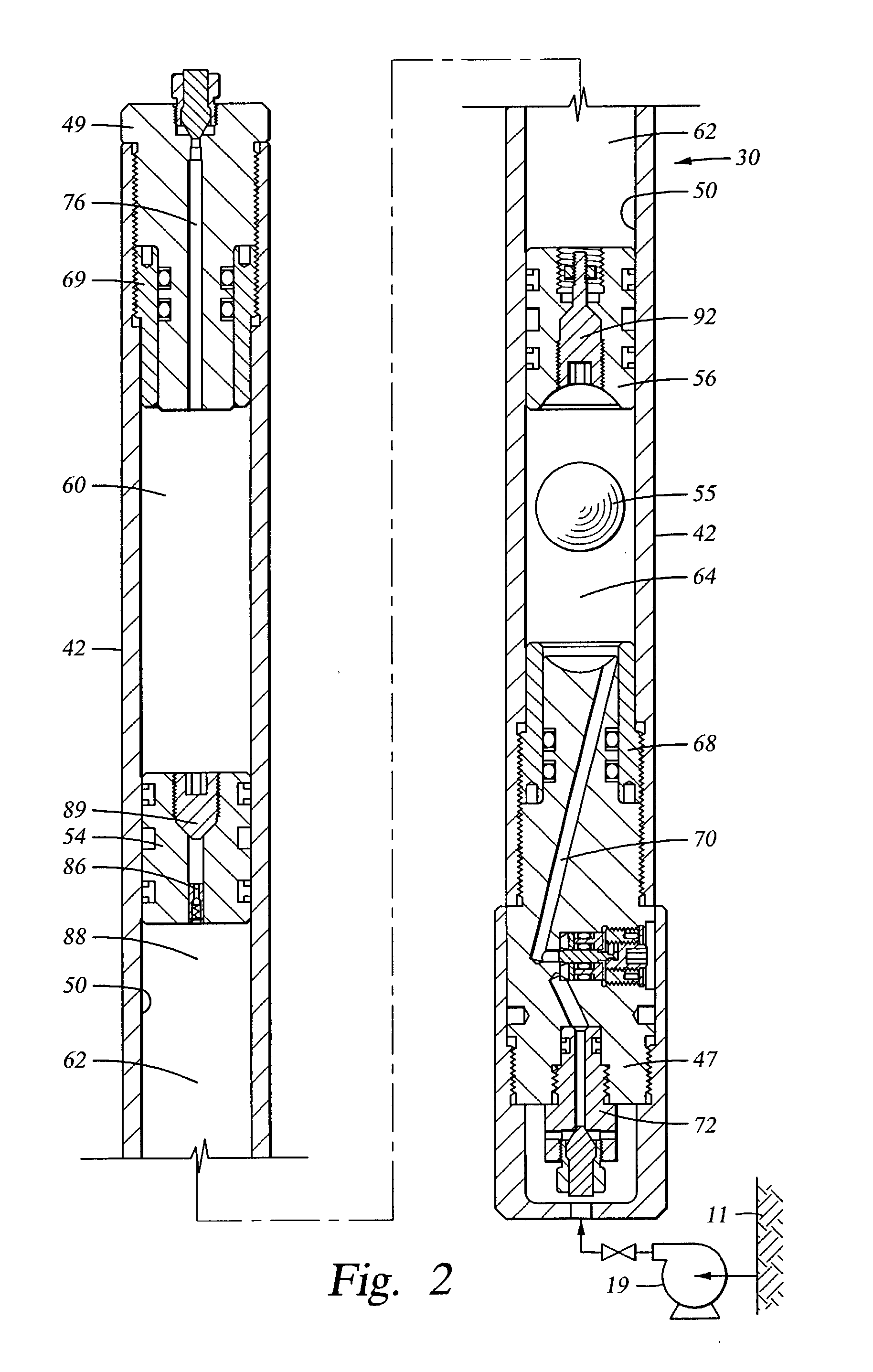Dual piston, single phase sampling mechanism and procedure
- Summary
- Abstract
- Description
- Claims
- Application Information
AI Technical Summary
Benefits of technology
Problems solved by technology
Method used
Image
Examples
Embodiment Construction
is supported by the drawings wherein like reference characters designate like or similar elements of the invention assembly throughout the several figures of the drawings and:
[0033] FIG. 1 is a schematic illustration of the invention in operative assembly with cooperative devices for extracting a sample of formation fluid from within a deep wellbore;
[0034] FIG. 2 is a schematic sectional view of a fundamental invention embodiment;
[0035] FIG. 3 is a schematic sectional view of one axial end of a second embodiment of the invention;
[0036] FIG. 4 is a schematic representation of the invention sample tank in the process of descending downhole.
[0037] FIG. 5 is a schematic representation of the invention sample tank receiving a formation fluid sample from the formation pump;
[0038] FIG. 6 is a schematic sectional view of the inner tubular body of the sample tank separated from the vacuum jacket;
[0039] FIG. 7 is a phase diagram for a typical hydrocarbon; and
[0040] FIG. 8 is a graph that char...
PUM
 Login to View More
Login to View More Abstract
Description
Claims
Application Information
 Login to View More
Login to View More - R&D
- Intellectual Property
- Life Sciences
- Materials
- Tech Scout
- Unparalleled Data Quality
- Higher Quality Content
- 60% Fewer Hallucinations
Browse by: Latest US Patents, China's latest patents, Technical Efficacy Thesaurus, Application Domain, Technology Topic, Popular Technical Reports.
© 2025 PatSnap. All rights reserved.Legal|Privacy policy|Modern Slavery Act Transparency Statement|Sitemap|About US| Contact US: help@patsnap.com



